Forget Everything the Financial Experts Tell You…
The Market Lives and Dies By This
Over the past years, I have been writing to prepare you for what I believe will happen next – not just with the stock market, but the entire global economy.
I have been asked for my thoughts on not just what to expect but what I plan to do with my expectations.
So today, I want to answer those questions in the simplest way possible.
This will be a short letter; not because it’s missing content, but rather I want to highlight a simple way to understand the dynamics of our global economy.
You may find that many of the answers you seek may be found by referring to this Letter.
It’s Rather Simple
First and foremost, you must understand that the dynamics of the global economy are controlled by financial instruments – be it stocks, derivatives, currencies, bonds, debt, etc.
These instruments have their purpose but their roots inevitably converge back to one simple concept…
The Concept of Money
Money, in the simplest term, is the concept of a medium that can be exchanged for goods and services and a store of value or wealth.
Ultimately, money can be many things depending on the parties involved in the exchange.
For example, money can be gold, silver, or coins, and it can be pieces of paper we call bank notes; that’s because you can almost universally exchange any of these things into something else.
In our modern era, currency has become the primary form of money.
Currency is a system of money that’s in general use in a particular country; its value is based on supply and demand, just like anything else. Generally, this supply and demand is based on the issuing countries’ respective economic (GDP, balance of trade, etc.) and financial (assets, interest rates, debt, money supply, etc.) strength.
Ultimately, money is the root of our global economy, while currency is the primary form of money.
Once we take that at face value, then it becomes much easier to understand not just what is going on, but what is about to happen.
Who Controls the Money?
“I care not what puppet is placed upon the throne of England to rule the Empire on which the sun never sets. The man who controls Britain’s money supply controls the British Empire, and I control the British money supply.”
~Nathan Rothschild
Ah, the famous quote from Nathan Rothschild. Whether this quote was actually written or spoken by Nathan Rothschild is irrelevant.
What’s relevant is that the quote is, in fact, very true.
Whoever controls the money supply controls the economy in which that currency resides.
But in our modern era of globalization, whoever controls the money supply of the world’s most widely used currency can actually control the entire global economy.
And which entity controls the money supply of the world’s most used currency?
The World’s Most Powerful Entity
The Federal Reserve, or the Fed, controls the money supply in the United States which is home to the US dollar – the most widely used and accepted form of money in the world.
And as we know, since 2008, the monetary base, or the sum of currency (including coin) in circulation outside Federal Reserve Banks and the U.S. Treasury, plus deposits held by depository institutions at Federal Reserve Banks, has more than quadrupled since 2008.
Let’s not forget that debt, stocks, bonds, and many other financial instruments can be money as well.
That means the overall true money supply has grown even more.
This is the Fed’s way of inflating the economy by increasing the money supply.
As I mentioned in past letters, the Federal Reserve is responsible for managing monetary policy. This means they manipulate interest rates to obtain a desired inflation target.
In addition to managing monetary policy, the Fed also oversees all the banks in the US and provides financial services to depository institutions such as banks, credit unions, and savings and loans – a bank to the banks, so to speak.
This is important because the Fed’s actions are what dictates what happens to the global economy.
Throughout history, the Fed has inflated and deflated the economy by lowering and raising interest rates, as well as increasing and decreasing the money supply.
History shows us when the Fed lowers interest rates and increases the money supply, the economy booms; when the Fed raises interest rates and decreases the money supply, the economy shrinks.
Here’s a quick history lesson from the Federal Reserve itself…
History of the Federal Reserve
“Regarding the Great Depression, … we did it. We’re very sorry. … We won’t do it again.” – Ben Bernanke, November 8, 2002, in a speech given at “A Conference to Honor Milton Friedman … On the Occasion of His 90th Birthday.”
In 2002, Ben Bernanke, then a member of the Federal Reserve Board of Governors, acknowledged publicly what economists have long believed. The Federal Reserve’s mistakes contributed to the “worst economic disaster in American history” (Bernanke 2002).
Bernanke, like other economic historians, characterized the Great Depression as a disaster because of its length, depth, and consequences. The Depression lasted a decade, beginning in 1929 and ending during World War II. Industrial production plummeted. Unemployment soared. Families suffered. Marriage rates fell. The contraction began in the United States and spread around the globe. The Depression was the longest and deepest downturn in the history of the United States and the modern industrial economy.
The Great Depression began in August 1929, when the economic expansion of the Roaring Twenties came to an end. A series of financial crises punctuated the contraction. These crises included a stock market crash in 1929, a series of regional banking panics in 1930 and 1931, and a series of national and international financial crises from 1931 through 1933. The downturn hit bottom in March 1933, when the commercial banking system collapsed and President Roosevelt declared a national banking holiday.
…To understand Bernanke’s statement, one needs to know what he meant by “we,” “did it,” and “won’t do it again.”
By “we,” Bernanke meant the leaders of the Federal Reserve System.
…By “did it,” Bernanke meant that the leaders of the Federal Reserve implemented policies that they thought were in the public interest. Unintentionally, some of their decisions hurt the economy. Other policies that would have helped were not adopted.
An example of the former is the Fed’s decision to raise interest rates in 1928 and 1929.
The Fed did this in an attempt to limit speculation in securities markets. This action slowed economic activity in the United States. Because the international gold standard linked interest rates and monetary policies among participating nations, the Fed’s actions triggered recessions in nations around the globe. The Fed repeated this mistake when responding to the international financial crisis in the fall of 1931.
…An example of the latter is the Fed’s failure to act as a lender of last resort during the banking panics that began in the fall of 1930 and ended with the banking holiday in the winter of 1933.”
Note that leading up to the Great Depression in 1929, the U.S. economy was booming and stocks were soaring – very much like today (on paper, anyway).
To reign in the exuberance, the Fed decided to raise interest rates and contract the money supply (by their own words, to limit speculation in the securities market).
The Fed’s actions resulted in the worst economic depression in U.S. history.
If you think that 1929 was an anomaly that only occurred because currency was backed by gold, think again…
Finding Balance: Inflate and Deflate
In 1971, United States President Richard Nixon removed the direct international convertibility of the United States dollar to gold.
In other words, the US dollar became a fiat currency backed by nothing more than a promise from the government. Should the government fail, the currency would likely become worthless.
As a result of the Nixon Shock, inflation took off as the value of the US dollar sank.
In March 1972, the Fed began to hike interest rates to combat the falling dollar. They were aggressive in their actions and hiked rates 21 times over the course of the next year in order to tame the runaway inflation taking place.
But their actions had serious consequences.
What followed was the first major recession of the early 1970’s.
The Fed continued to hike rates up until 1974 when it finally decided to shift course and reflate the economy by lowering rates later that year.
By lowering rates, the Fed put an end to the stagnation/recession of the early 1970’s.
But the Fed simply cannot keep rates low for long…
A couple of years later, the Fed hiked rates again starting in December 1976. This, of course, led to yet another small recession in 1980. To combat this again, the Fed lowered rates.
Over the next few years, the Fed went back and forth hiking and lowering rates until it reached a peak interest rate level of 20 percent.
These rate hikes once again put the US into a major recession – one that became known as the second-worst recession since the Great Depression, second only to the Great Recession of 2008.
Unsurprisingly, to combat the recession that resulted from the rate hikes, the Fed slashed rates by nearly 50 percent from the 20 percent in June 1981 down to 10.8 percent in November 1982.
Because of the dramatic rate hikes of the 70s and early 80s, the Fed slowed their rates hikes in the late 80s, raising rates just over 3 percentage points over the course of 22 months.
Eventually, the rate hikes took effect which led to the Black Monday stock crash of October 1987. And again, prompted the Fed to – you guessed it – lower rates.
Over the next few years, the Fed continued to slowly lower rates to stimulate the economy.
When the economy picked up steam, the Fed hiked rates yet again.
Between 1995 and 2000, the world was taken by storm by a unique economic occurrence – the consumerization of the Internet, which paved the way for the dotcom bubble.
When the bubble burst in 2001, it wiped out trillions of dollars. As a result, the Fed was once again forced to ease and lower interest rates over the following years.
This led to the market exuberance which caused the housing bubble of 2008.
As you can see, it’s a rather simple cycle.
The Fed inflates and deflates, and inflates and deflates…
What Next?
As I mentioned in the last newsletter, the Fed is now on a path to raise interest rates and decrease the money supply.
Via “What Happens When the Financial Bubble Pops”:
“We’re certainly late in the cycle of a financial bubble.
The earnings of S&P 500 companies have gone back to 2011 levels, yet the market is up 70%. Furthermore, over the last three years, debt accumulation has outpaced both EBITDA growth and cash generation.
That makes U.S. equities one of the most expensive asset classes in the world.
In terms of a bubble, we’ve certainly reached the euphoria stage.
While this bubble still has room to grow because of the new consumer credit boom, we’re already witnessing signs of the next stage of a financial bubble: profit taking.
Corporations are no longer buying back stock and insiders are now selling more stock than they’re buying. Meanwhile, the smart money continues to take profits.
The problem is that this market euphoria is pushing the debt envelope further as consumers take on even more credit during a time when interest rates are likely to rise.
In the past year and a half, the Fed has raised interest rates three times and is expected to raise them three more times before this year is over.
In addition, the Fed is expected to reverse QE by reducing its balance sheet and contract the money supply.
As I mentioned earlier, when credit dries up, the bubble pops.
When it does, it will be the biggest economic reset the world has ever seen.”
It’s hard to fathom that Ben Bernanke’s statement of “we won’t do it again,” had the right intentions because throughout history, the Fed inflates and deflates in order to maintain balance and control the world’s money supply.
If the Fed allows our market exuberance to continue, people will eventually lose faith in the current monetary system and the Fed will lose control.
After nearly a decade of low interest rates and a massive increase to the money supply, the next step for the Fed is to deflate the inflation.
And that’s precisely what the Fed appears to be doing.
Now you might be thinking, “what inflation?”
Your Idea of Inflation is Wrong
Here’s where I think everyone has it wrong.
While it’s true that inflation hasn’t soared alongside the rapid increase in the monetary base, it only remains true under the Fed’s definition of inflation, which is measured by the Personal Consumption Expenditures (PCE), the primary measure of consumer spending on goods and services in the U.S. economy.
But remember, just as money isn’t simply currency, the PCE isn’t the only form of inflation.
To truly see if the massive increase in the monetary base has inflated the economy, both directly and indirectly, we must follow the money. Only by following the money will we see the true effects of the Fed’s monetary policies.
Follow the Money: What Happened to Inflation
Since 2009, U.S. stocks have gone up over 300% – just shy of the percentage increase in the monetary base.
Where’s the rest of that flow?
The average home in the U.S. is now more expensive than it was before the 2008 housing crisis and has climbed more than 40 percent since the beginning of 2012.
In larger cities such as Los Angeles, California, and Seattle, Washington, housing prices have climbed over 60 and 70 percent, respectively, during that same time.

In Vancouver, BC, Canada, the price of a detached home averaged just under CDN $800k at the beginning of 2009 but reached over $1.8 million last year – an increase of over 125%.
In other words, inflation has most certainly occurred but it’s been focused on where the money has flowed: housing, stocks, and other financial instruments.
Even if we take just housing and stocks, then most certainly we have witnessed inflation equal to that of the increase in the monetary base.
Putting it into Perspective
Since 2008, the total market capitalization of listed US companies has climbed from US$11.59 trillion to over $27.35 trillion in 2016. That’s nearly 16 trillion US dollars of wealth created in seven years – more than triple the value of the newly created money supply since 2008.

Globally, the value of listed securities has climbed more than US$33 trillion in that same period.
In late 2011, the total value of every home in the United States was worth US$22 trillion. By the end of last year, it reached over $29.6 trillion – that’s more than $7 trillion of wealth created in five years – nearly double the value of the newly created money supply since 2008.
What to Do
If you’re a diehard anti-government radical thinker and believe the worst can happen, you would most certainly want to buy as much gold, silver, and tangible coins as you can.
But if that is your view, know that when things deflate, hard assets do too and that can include gold and silver. So as long as you view gold and silver as an asset protection rather than an investment, you should be fine.
On the other hand, if you’re more grounded and believe that our primary world currencies won’t fail, then it would be wise to cash up by selling inflated assets before they deflate. This way, you can have a big war chest to buy assets on the cheap when things deflate – think Warren Buffett.
Conclusion
We can spend countless hours talking about earnings, real estate, employment, etc., but it all boils down to what the Fed will do next.
I stress that the Fed is already on the path to deflating.
And since much of the inflating has gone into stocks and housing, that’s likely where the bulk of deflating will take place first.
How long it will take before the deflationary pressures come crashing down will depend on how fast the Fed acts.
Eventually, however, there will come a breaking point and I suspect that it will be no more than a 2% rise in interest rates from here.
So, what should we do based on these expectations?
As I mentioned in my last Letter, we still have some time before this happens as a result of the next push in consumer debt. This should fuel spending and also increase housing prices in parts of the United States where prices have not recovered from 2008.
That means there is still room to make a profit before it comes crashing down.
I am looking to slowly ease myself out of many investments over the next 6-12 months (depending on Fed actions) and only invest or trade in things that have a chance at being bought out within that time frame, or unique opportunities in new markets such as marijuana (think dotcom boom before the bust).
In the near term, if you don’t think things will crash within the next few months, Canadian stocks generally find a seasonal bottom at the end of July before bouncing back late summer and into Q3. From a historical perspective, that means if you’re going to buy Canadian stocks, now is the time to do so before the market bounces back.
Personally, I hope we have 6-12 months before the market crashes to invest now, ride the wave, and cash out before the real deflationary pressures in housing and the stock market take place.

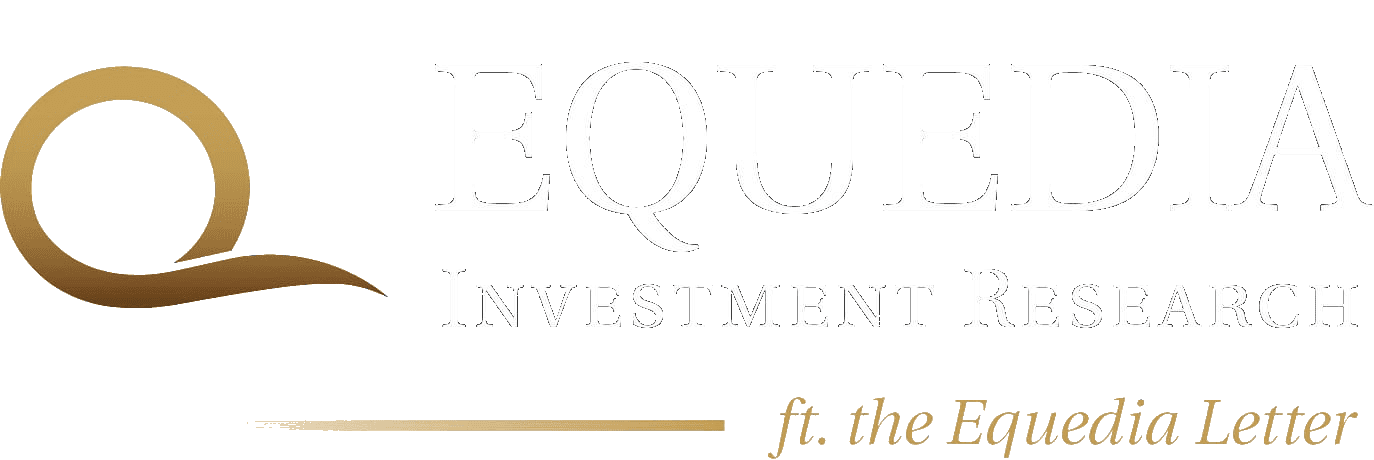
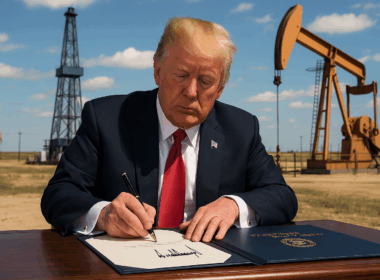
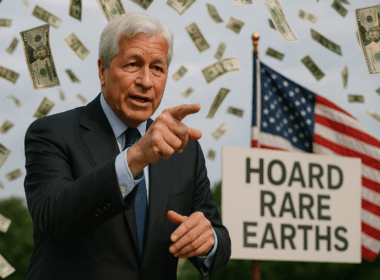






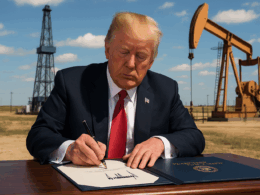
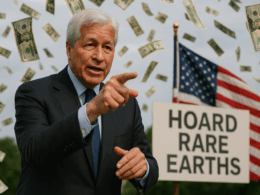


Good Morning Ivan,
Always an anticipatory pleasure when I check my email and find you’ve had time (and the energy) to send us, all of us, another Sunday letter.
Thank You!
I’m writing this morning to ask if you have a website that comments on some or perhaps all of the stocks you’ve recommended?
I currently own many that you’ve written about, however, finding timely news update information is difficult becuz most of the companies are without presence in the United States.
1. Canada Zinc…I’ve read and re-read your letter a number of times and keep buying anytime there’s a price dip. It would be appreciated if could provide an update from your vantage point.
2. Integra Gold….Now Eldorado Gold. It would be appreciated if could provide an update from your vantage point and any thoughts you have about EGO.
3. Newmarket Gold…Now Kirkland Lake Gold. What a fun ride this has been. It would be appreciated if could you provide an update from your vantage point.
4. Nexoptic Tech…Incredible Home Run…Thank You for sure! It would be appreciated if you could provide an update from your vantage point.
5. Red Eagle…Seems we, and the company, were a bit blindsided by the need for a “Paste Backfill Plant” (?) Whatever that is????? They’ve issued Warrants, to raise new funds, however, I’ve discovered I can’t exercise the warrants becuz they are not registered here in the Unites States. That’s a shame.In the interim I’ve plan to continue buying open market shares. It would be appreciated if could provide an update from your vantage point.
6. 3-D Signatures…This is a tough one becuz, as of a few months ago, I truly could not locate any update information. It would be appreciated if you could provide an update from the company and your vantage point.
7. At some point in the past I read about a Premium Subscription Service (?) offered by Equedia, however, if I’m remembering correctly, membership back then was closed….Is that still the case? If not, I would like to explore such membership.
As always, your efforts are greatly appreciated,
Jock Begg
Corona del Mar, CA
Thank You.
Hello my name is Wilson and am a private loan lender.
Greetings to you today. Thank you for helping and ending your financial problems. We offer all kinds of loans (personal loans, commercial loans, etc.). Our loan amount ranges from 2000.00 USD to USD 50.000.000.00 USD and the repayment period from one year to 30 years. To start the loan application process, contact us at wilsonfastloan@yahoo.com
YEAH but all your saying is what we all have known all along and no matter how much money you have!, change will always take place and the seasons will rule and mother nature will put it all back in its place where it belongs and once thing is for certain no amount of money will make Mrs. Mother Nature go away we are all going to have to deal with her fury if we all don’t start getting along and stop having wars because even at this very moment there are wars and rumors of wars so that is an average of about 100 different wars going at any one time in the world.
As long as Americans can find a reason to continue to work together and I do mean work together – Happily there is still hope and we also have Technology working on both sides we as a society must learn to harness our genius and Trust in the checks and balances in our society, come together, learn to distribute the wealth to one another for humanity Sake, we shall triumph.